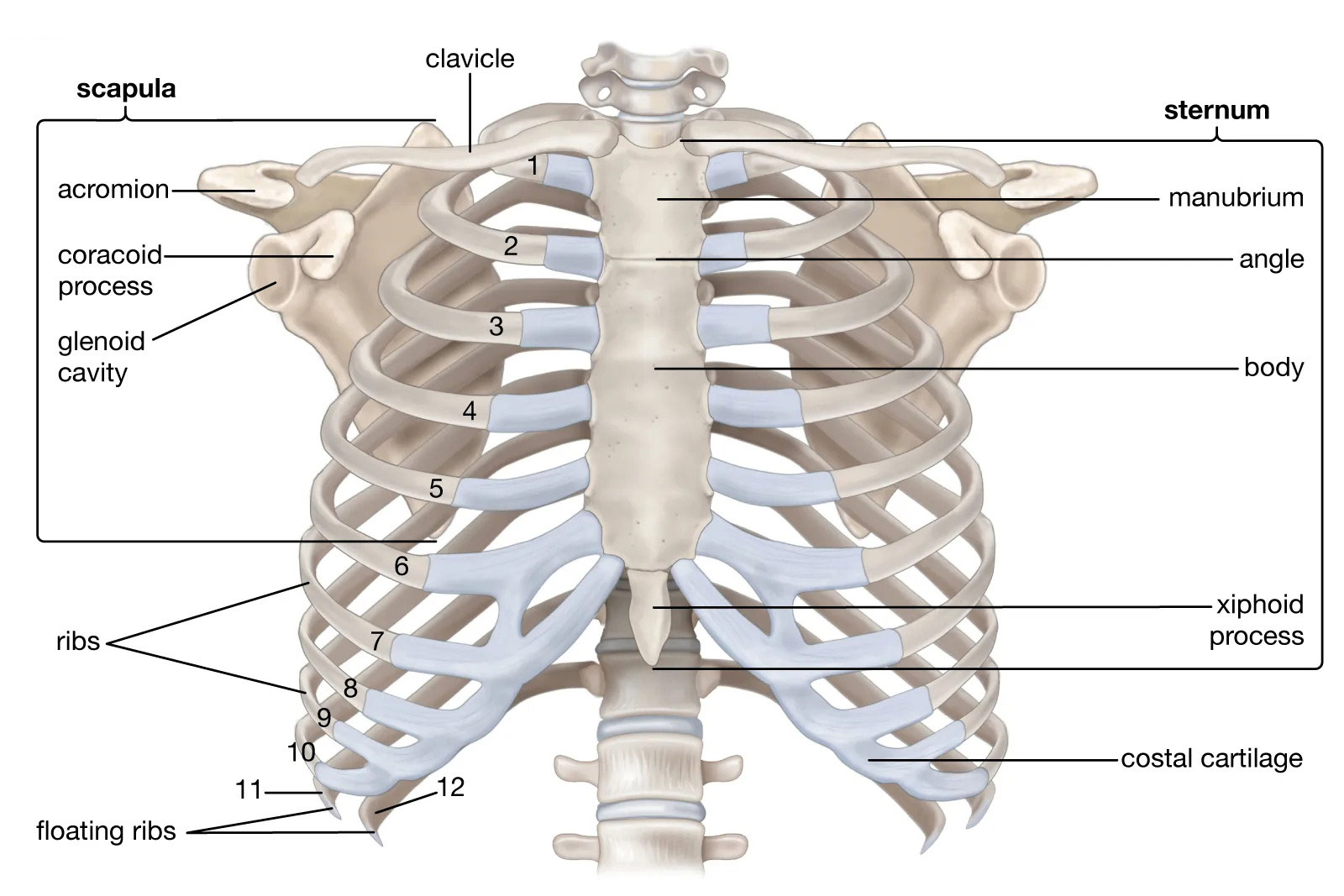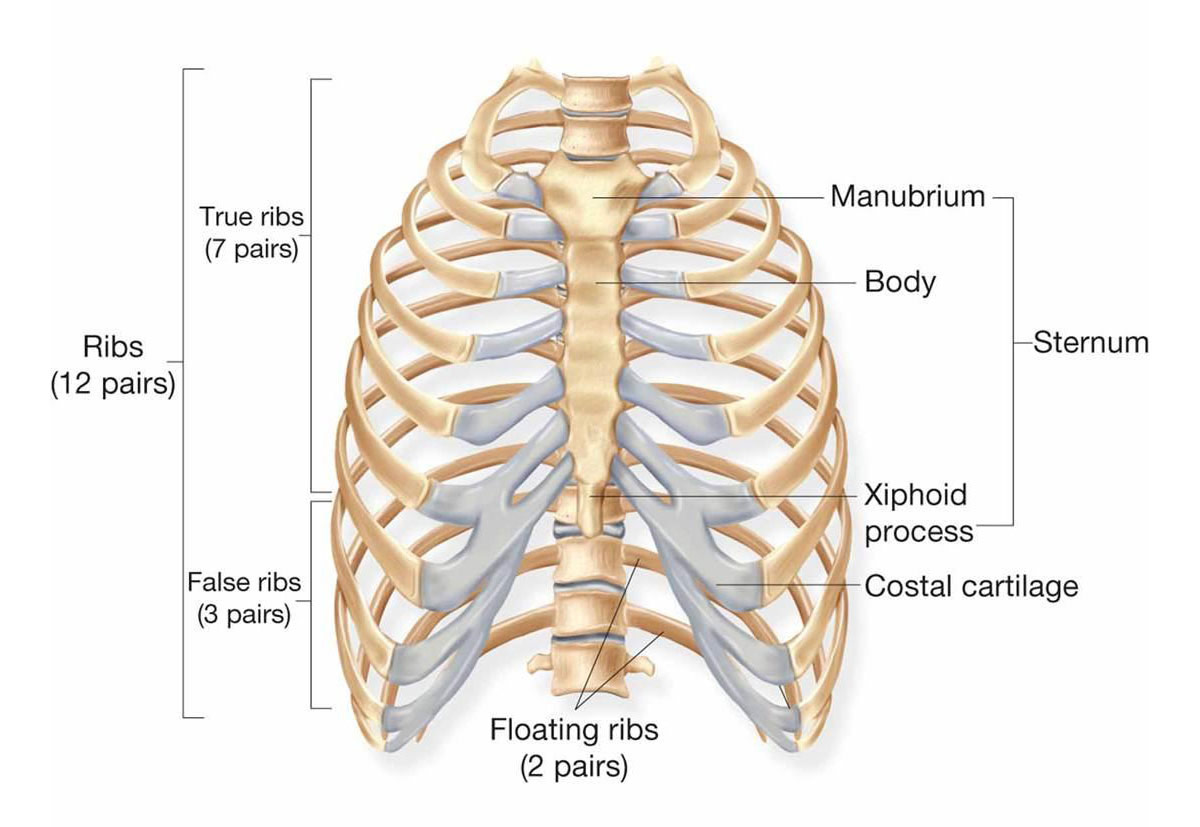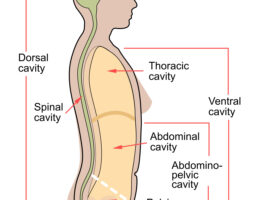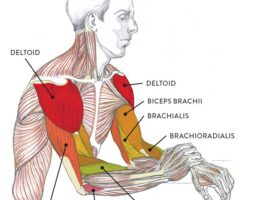The rib cage is the structure of bones that surrounds the chest and protects the vital organs within. Here is a brief description of the labeled parts of the rib cage:
- Sternum: The flat bone located in the center of the chest that connects the ribs.
- Clavicle: The collarbone, which connects the sternum to the shoulder.
- Scapula: The shoulder blade, which is attached to the upper back and serves as an attachment site for the muscles that move the arms.
- Rib: The long, curved bone that forms the sides of the rib cage and protects the lungs, heart, and other organs.
- Costal cartilage: The flexible tissue that connects the ribs to the sternum.
- True rib: The first seven pairs of ribs that attach directly to the sternum.
- False rib: The next three pairs of ribs that attach to the sternum indirectly through the costal cartilage of the ribs above them.
- Floating rib: The last two pairs of ribs that are not attached to the sternum at all and are free-floating at their distal ends.
- Intercostal muscles: The muscles that run between the ribs and aid in breathing.
- Diaphragm: The large muscle that separates the chest cavity from the abdominal cavity and plays a key role in respiration.
These are the main labeled parts of the rib cage. The rib cage is an essential structure that plays a critical role in protecting the body’s vital organs and supporting respiratory function.




